#Salammbo
Explore tagged Tumblr posts
Text

Illustration from the Novel 'Salammbo' by Almery Lobel - Riche, 1935
537 notes
·
View notes
Text

Salammbô, 1907
Artist: Gaston Bussière
41 notes
·
View notes
Text
About Tanit
I recently posted about how people should be looking more into other gods outside of the Greco-Roman pantheons. If you follow me for quite some times, you will also have noted I posted a bunch of loose translation from the French Dictionary of literary myths (which is truly a great reference). Well, I wanted to share with you today a loose translation – well, more of an info-mining at this point – of an article about a goddess that people often ignore the existence of, despite being located right next to Ancient Greece and Rome, and being involved in the history of the Roman Empire. And this goddess is Tanit.
Written by Ildiko Lorinszky, the article is organized in two – at first it takes a look and analysis at the mythological Tanit, at who and what she likely was, how her cult was organized all that. The second part, since it is a Dictionary of LITERARY myths, takes a look at the most prominent and famous depiction of Tanit in French literature – that is to say Flaubert’s famous Salammbô. (If you recalled, a long time ago I posted about how a journalist theorized in an article how Flaubert’s Salammbô was basically an “epic fantasy” novel a la Moorcock or Tolkien long before “fantasy” was even a genre)
Part 1: Tanit in mythology and archeology
Tanit was the patron-goddess of the city of Carthage. Considered to be one of the avatars o the Phoenician goddess Astarte, Tanit’s title, as found on several Punic engravings, was “The Face of Baal” – a qualification very close to how Astarte was called in Sidon and Ugarit “The Name of Baal”. These titles seem to indicate that these two goddesses acted as mediators or intermediaries between humanity and Baal.
Tanit is as such associated with Baal, the vegetation god, but sometimes she is his wife, other times she is simply his paredra (companion/female counterpart). She seems to be the female power accompanying the personification of masculinity that is Baal, and as such their relationship can evoke the one between Isis and Osiris: the youthful sap of the lunar goddess regularly regenerates the power of the god. This “nursing” or “nourishing” function of Tanit seems to have been highlighted by the title she received during the Roman era: the Ops, or the Nutrix, the “Nurse of Saturn”. Goddess of the strengthened earth, Tanit is deeply tied to agrarian rituals: her hierogamy with Baal reproduces in heaven the birth of seeds on earth. Within the sanctuaries of Tanit, men and women devoted to the goddess practiced a sacred prostitution in order to favorize the fecundity of nature. The women tied to the temple were called “nubile girls”, while the men working there were called “dogs” to highlight how completely enslaved they were to the goddess. We know that the prostitutes of both sexes brought important incomes to the temple/
The etymology of Tanit (whose name can also be called Tannit or Tinnit) is obscure. The most probable hypothesis is that the Phoenico-Punic theonym “Tnt” is tied to the verb “tny”, which was used in the Bible to mean “lamenting”, “wailing”, “crying”. According to this interpretation, the “tannît” is originally a “crier”, a “wailer”, and the full name of Tanit means “She who cries before Baal”. As such, the Carthaginian goddess might come from a same tradition as the “Venus lugens”.
According to some mythographers, Tanit (or Astarte) was the supreme goddess of Carthage, and might have been identical to the figures of Dido and Elissa. As in, Dido was in truth the celestial goddess, considered as the founder of the city and its first queen. According to this hypothesis, the suicide of Dido on a pyre was a pure invention of Virgil, who took this motif from various celebrations hosted at Carthage. During these feasts-days, images and depictions of the goddess were burned The word Anna would simply mean “clement”, “mild”, “merciful” – the famous Anna, sister of Dido, is thought to have been another Punic goddess, whose cult was brought from Carthage to Rome, and who there was confused with the roman Anna Perenna, a goddess similar to Venus. Varro claimed that it was not Dido that burned on the pyre, but Anna, and according to this angle, Anna appears as a double of Dido – and like her, she would be another manifestation of the goddess Tanit. Anna’s very name reminds of the name “Nanaia”/”Aine”, which was a title given to Mylitta, yet another manifestation of Tanit.
The sign known as the “sign” or “symbol of Tanit” seems to be a simplified depiction of the goddess with her arms open: it is a triangle (reduced to a trapezoid as the top of the triangle is cut) with an horizontal line at its top, an a disc above the horizontal line. This symbol appears throughout the Punic world on monuments, steles, ceramics and clay figurines.
Part 2: The literary Tanit of Flaubert
Gustave Flaubert’s novel Salammbô is probably where the goddess reappears with the most splendor in literature. While her essence is shown being omnipresent throughout the Punic world, Tanit, as the soul of the city, truly dwells within the town’s sanctuary, which keeps her sacred cloak. The veil of the goddess, desired by many, stolen then regained throughout the plot, plays a key role within the structure of this very enigmatic text, which presents itself as a “veiled narrative”.
The town and its lands are filled with the soul of the “Carthaginian Venus”. The countryside, for example, is filled with an erotic subtext, sometimes seducing, sometimes frightening – reflecting the ambiguity of the goddess. The landscape is all curves, softness, roundness, evoking the shapes of a female body – and the architecture of both the city-buildings and countryside-buildings are described in carnal ways. Within Salammbô, Flaubert describes a world where the spirit and the flesh are intertwined – the female world of Carthage is oppressed by an aura mixing lust with mysticism; and through the erotic nature creeps both a frightening sacred and an attractive morbidity. For death and destruction is coming upon Carthage.
The contradictory nature of the goddess appears as early as the very first scene of the novel, when the gardens of Hamilcar are described. The novel opens on a life-filled landscape: the gardens of the palace are a true Land of Eden, with an abundant vegetation filled with fertility symbols. The plants that are listed are not mere exotic ornaments: they all bear symbolic and mythological connotations. The fig-tree, symbol of abundance and fecundity ; the sycamore, “living body of Hathor”, the tree of the Egyptian moon-goddess ; the grenade, symbol of fertility due to its multiple seeds ; the pine tree, linked to Attis the lover of Cybele ; the cypress, Artemis’ tree ; the lily, which whose perfume was said to be an aphrodisiac ; the vine-grapes and the rose… All those plants are linked to the moon, that the Carthaginian religion associated with Tanit. Most of these symbols, however, have a macabre touch reflecting the dark side of the goddess. The cypress, the “tree of life”, is also a funeral tree linked to the underworld ; the coral is said to be the same red as blood, and was supposedly born from the blood-drops of Medusa ; the lily symbolizes temptation and the unavoidable attraction of the world of the dead ; the fig-tree just like the grenade have a negative side tied to sterility… The flora of this passage, mixing benevolent and malevolent attributes, already depict a world of coexisting and yet opposed principles: fertility cannot exist without sterility, and death is always followed by a renewal. The garden’s description introduces in the text the very cycles of nature, while also bringing up the first signs of the ambivalence that dominates the story.
The same union of opposites is found within the mysterious persona of Tanit. The prayer of Salammbô (which was designed to evoke Lucius’ lamentations to Isis within Apuleius’ Metamorphosis) first describes a benevolent goddess of the moon, who fecundates the world : “How you turn, slowly, supported by the impalpable ether! It polishes itself around you, and it is the movement of your agitation that distributes the winds and the fecund dews. It is as you grow and decrease that the eyes of the cats and the spots of the panthers lengthen or shrink. The wives scream your name in the pains of labor! You inflate the sea-shells! You make the wines boil! […] And all seeds, o goddess, ferment within the dark depths of your humidity.” As a goddess presiding to the process of fermentation, Tanit is also tied to the principle of death – because it is her that makes corpses rot.
The Carthaginian Venus appears sometimes as an hermaphrodite divinity, but with a prevalence and dominance of her feminine aspect. Other times, she appears as just one of two distinct divinity, the female manifestation in couple with a male principle. Tanit synthetizes within her the main aspects of all the great moon-goddesses: Hathor, Ishtar, Isis, Astarte, Anaitis... All are supposed to have an omnipotence when it comes to the vegetal life. Mistress of the elements, Tanit can be linked to the Mother-Earth : for the character of Salammbô, the cloak of the goddess will appear as the veil of nature. The daughter of Hamilcar is linked in a quite mysterious way to Tanit – for she is both a frightened follower of the goddess, and the deity’s incarnation. Described as “pale” and “light” as the moon, she is said to be influenced by the celestial body: in the third chapter, it is explained that Salammbô weakened every time the moon waned, and that while she was languishing during the day, she strengthened herself by nightfall – with an additional mention that she almost died during an eclipse. Flaubert ties together his heroine’s traits with the very name “Salammbô”, which is a reminiscence of the funeral love of Astarte: “Astarte cries for Adonis, an immense grief weighs upon her. She searches. Salmmbô has a vague and mournful love”. According to Michelet’s explanations, “Salambo”, the “love name” of Astarte, is meant to evoke a “mad, dismal and furious flute, which was played during burials”.
As a character embodying Tanit, Salammbô is associated with the two animals that were sacred to the goddess: the holy fishes, and the python snake, also called “the house-spirit”. Upon the “day of the vengeance”, when Mâtho, the scape-goat, is charged with all the crimes of the mercenaries, she appears under the identity of Dercéto, the “fish-woman”. The very detailed costumes of Salammbô contain motifs borrowed to other goddesses that are avatars of Tanit. By using other goddesses, Flaubert widens the range of shapes the lunar goddess can appear with, while also bringing several mythical tales, whose scattered fragments infiltrate themselves within the novel. When she welcomes her father, Salammbô wears around her neck “two small quadrangular plates of gold depicting a woman between two lions ; and her costume reproduced fully the outfit of the goddess”. The goddess depicted here is Cybele, the passionate lover of Attis, the young Phrygian shepherd. This love story that ends in mutilations bears several analogies with the fatal love between Salammbô and the Lybian leader. And the motif of the mutilation is one of the key-images of the novel.
A fish-woman, like Dercéto, Salmmbô is also a dove-woman, reminding of Semiramis ; but more so, she is a snake-woman, linked mysteriously to the python. Before uniting herself with Mâtho (who is identified to Moloch), Salammbô unites herself with the snake that incarnates the lunar goddess in her hermaphroditic shape. It is the python that initiates Salammbô to the mysteries, revealing to Hamilcar’s daughter the unbreakable bond between eroticism and holiness. In the first drafts of the novel, Salammbô was a priestess of Tanit, but in the final story, Flaubert chose to have her father denying her access to the priesthood. So, she rather becomes a priestess under Mathô’s tent: using the zaïmph, she practices a sacred prostitution. The union of Hamilcar’s daughter and of the leader of the mercenaries reproduces the hierogamy of Tanit and Moloch.
Salammbô, confused with Tanit, is also victim of the jealous Rabbet. Obsessed with discovering the face of the goddess hidden under the veil, she joins the ranks of all those female characters who curiosity leads to the transgression of a divine rule (Eve, Pandora, Psyche, Semele). And, in a way, the story of Mathô and Salammbô reproduces this same story: the desire to see, the desire for knowledge, always leads to an ineluctable death.
#tanit#astarte#punic goddess#carthaginian goddess#carthage#baal#flaubert#salammbô#salammbo#french literature#punic mythology#carthaginian mythology
77 notes
·
View notes
Text

Salammbô, Gaston Bussière, 1907
#art#art history#Gaston Bussiere#portrait#portrait painting#imaginary portrait#literary painting#illustration#Salammbo#Gustave Flaubert#Symbolism#Symbolist art#French art#20th century art#oil on canvas
254 notes
·
View notes
Text

Philippe Druillet, Lone Sloane: Salammbô.
15 notes
·
View notes
Text

Betty Compton by William Mortensen
74 notes
·
View notes
Text
We're definitely entering an era of Moloch. Not in a cringe Scott Alexander way. As opposed to Tanith, I mean. They will be feeding infants into the fiery furnace to rekindle the masculine principle pretty soon.
3 notes
·
View notes
Photo






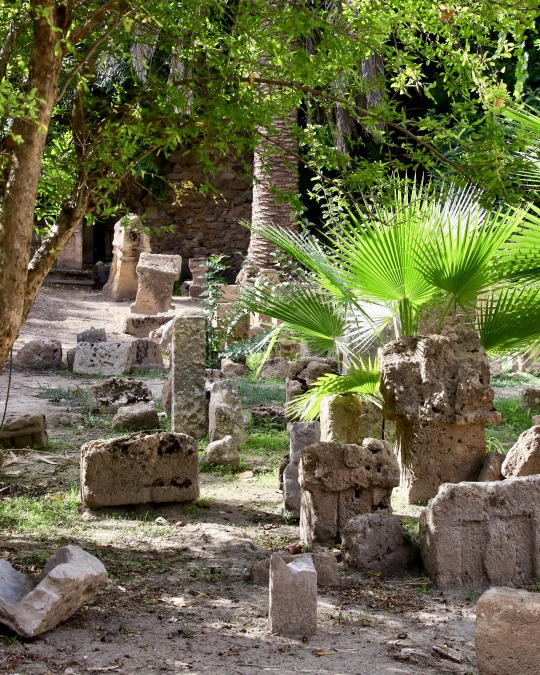
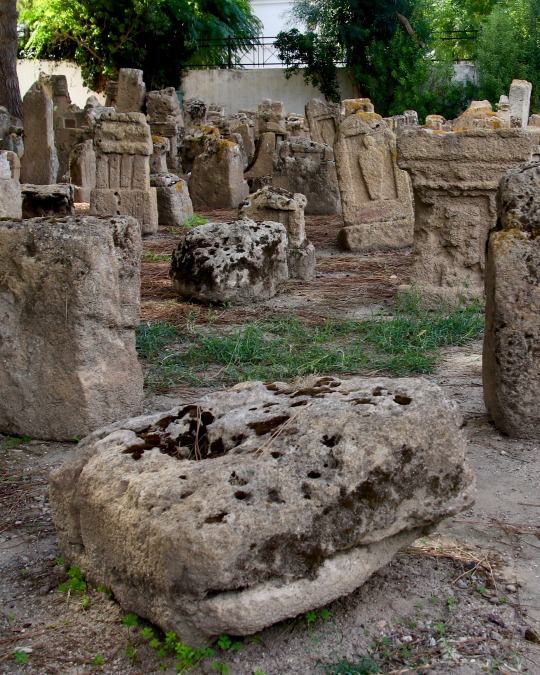
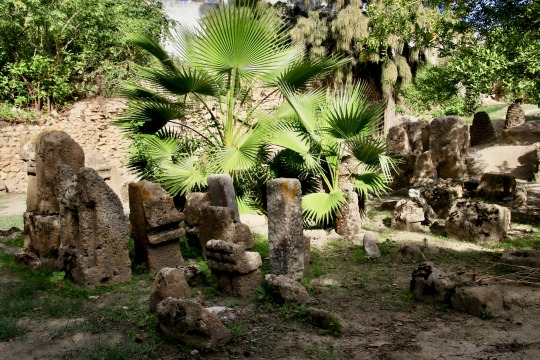
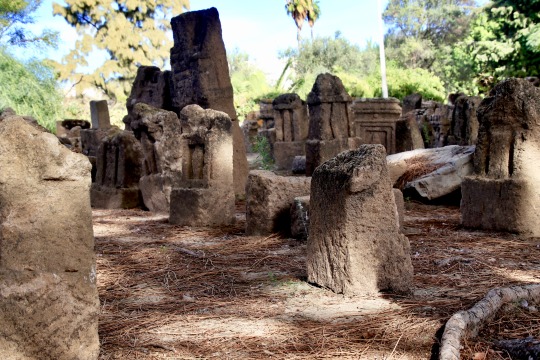
Carthage ( Tunisia )
#punicwars#punicians#punic#salammbo#carthaginianempire#travel#mediterranean#ancientcarthage#hannibal#romanempire#history#ruins#carthageruins#visitcarthage#carthage#exploretunisia#tunisiatravel#trip#visittunisia#tunisia#northafrica#africa#travelphotography#architecture#carthagina#photooftheday#explore#aroundtheworld#cemetery#ancient
21 notes
·
View notes
Quote
In front of him, among the olives, palms, myrtles and planes, stretched two broad ponds which met another lake, the outlines of which could not be seen. Behind one mountain other mountains reared themselves, and in the middle of the immense lake rose an island perfectly black and pyramidal in form. On the left, at the extremity of the gulf, were sand-heaps like arrested waves, large and pale, while the sea, flat as a pavement of lapis-lazuli, ascended by insensible degrees to the edge of the sky. The verdure of the country was lost in places beneath long sheets of yellow; carobs were shining like knobs of coral; vine branches drooped from the tops of the sycamores; the murmuring of the water could be heard; crested larks were hopping about, and the sun’s latest fires gilded the carapaces of the tortoises as they came forth from the reeds to inhale the breeze.
Salammbô (1862) by Gustave Flaubert.
23 notes
·
View notes
Text


Project 1: Self-Portrait with Technology
Artist Research
Pascal Blanché, a French Canadian artist. Salammbo (left) Violence, passion, in-depth exploration of human instincts.
Blue Dreams (right) The dreams that people pursue, even if these dreams are accompanied by some pain or uncertainty. The works of this artist mostly combine a sense of futuristic technology with the interaction between sci-fi robots and humans.
0 notes
Text

1 note
·
View note
Text
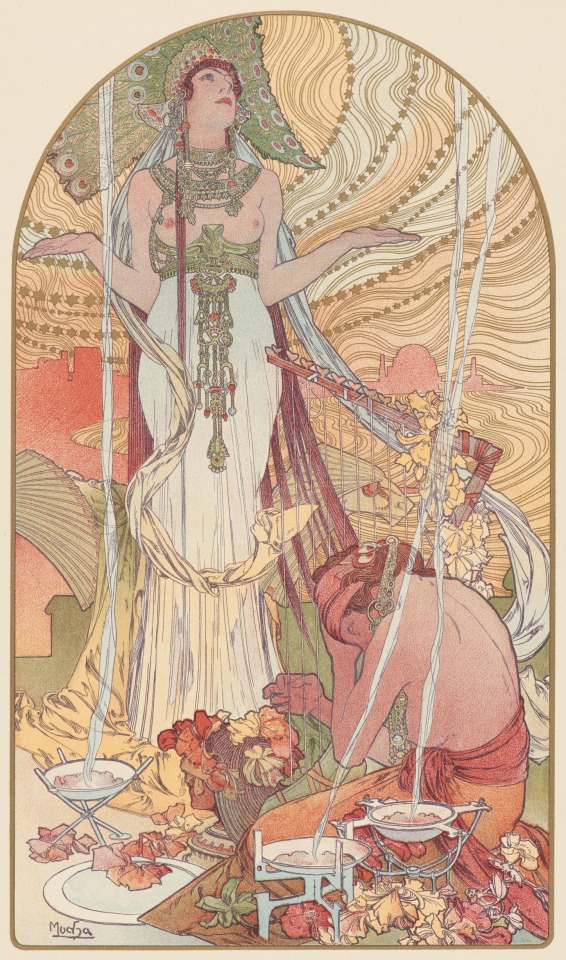
Incantation (Salammbo), 1897 Alphonse Mucha
#Alphonse Mucha#czech art#illustration#art#painting#art history#Art Nouveau#poster#1890s#portrait#salammbô#literature
2K notes
·
View notes
Text
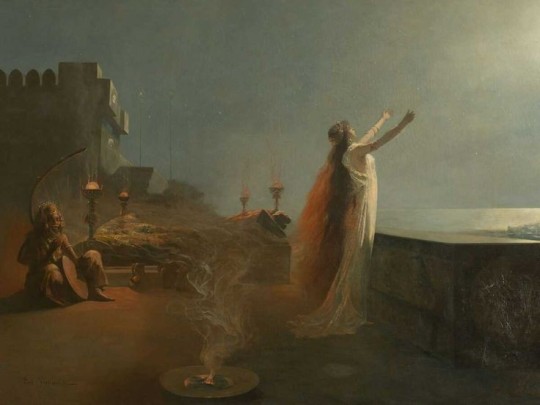
'Salammbo'. Jean Paul Sinibaldi. 1885.
285 notes
·
View notes
Text

Philippe Druillet, Lone Sloane: Salammbô.
6 notes
·
View notes
Text

Salammbo
by Philippe Druillet
Heavy Metal September 1980 (Vol.4 #6)
12 notes
·
View notes
